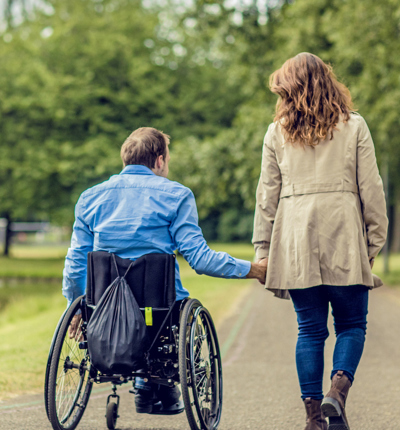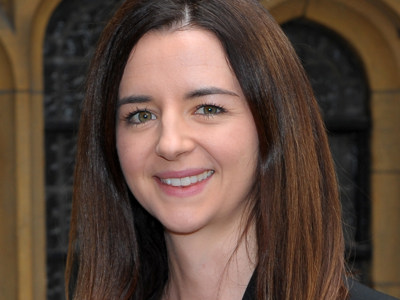
Update on Life Expectancy Evidence in Personal Injury Claims
Katherine Wilkinson discusses the impact of a recent judgment rejecting the use of expert statistical evidence for life expectancy in personal injury claims.
Posted on 25 June 2020
In the recent judgment of Chaplin v Pistol (1) and Allianz PLC (2)[2020] EWHC 1543 (QB) the Hight Court endorsed Master Davison’s 2019 decision in Leigh Day’s case, Dodds v Arif and Aviva Insurance Limited [2019] EWHC 1512QB, and rejected the defendants’ application for expert statistical evidence of life expectancy in a traumatic brain injury case.
General Approach to Life Expectancy Evidence
An assessment of a claimant’s life expectancy is required in personal injury cases to enable future losses to be calculated. The starting point for the assessment of life expectancy is the presumption that it is normal, as established in the case of Rowley v London and North Western Railway (1873).
The Ogden tables set out the average “normal” life expectancy statistics collated by the Office of National Statistics and are based on “a reasonable estimate of the future mortality to be experienced by average members of the population alive today”. The Ogden tables ought to be used when calculating a person’s future losses unless there is clear evidence in an individual case that the claimant is “atypical”.
Departing from the “norm”
When a claimant has suffered serious injuries, defendants will often seek to reduce their damages by arguing that it is appropriate to use a shorter life expectancy to calculate future losses than the figures set out in the Ogden tables; either because of the impact of the injury, or because of a claimant’s pre-existing medical condition or lifestyle factors.
Dodds v Arif and Aviva Insurance Limited [2019]
In Leigh Day’s case of Dodds, our client suffered a severe traumatic brain injury in a road traffic collision at the age of 73. The claimant, Ms Dodds, had a medical history of raised cholesterol and blood pressure. Leigh Day obtained evidence from an expert neurologist whose opinion was that Ms Dodds’ life expectancy was unlikely to be significantly reduced.
The defendants requested permission from the Court to rely on bespoke life expectancy evidence from Professor Bowen-Jones, a consultant physician and endocrinologist. He considered that Ms Dodds’ life expectancy should be reduced by 3.29 years due to her pre-existing health conditions, and even further as a result of the head injury she suffered in the collision, leading to an overall reduction of 5.08 years. This would have significantly reduced Ms Dodds’ future losses claim.
The claimant argued that the evidence of clinical experts, such as the neurologist, provided the normal and primary route through which the issue of life expectancy was to be addressed. Master Davison accepted this argument and dismissed the defendants’ application to rely on a bespoke report concerning the claimant’s life expectancy.
Master Davison stated:
“It seems to me that bespoke life expectancy evidence from an expert in that field should be confined to cases where the relevant clinical experts cannot offer an opinion at all or state that they require specific input from a life expectancy expert.”
Master Davison provided a helpful overview of the principles he had applied:
Where the claimant’s injury had not itself impacted on life expectancy, permission for standalone evidence on life expectancy will not be given unless the condition in paragraph 5 of the Ogden table Explanatory Notes is satisfied, and there is ‘clear evidence… to support the view that the individual is atypical and will enjoy longer or shorter expectation of life’.
Where the injury has impacted on life expectancy, or where the condition in paragraph 5 of the Explanatory Notes is satisfied, the ‘normal or primary route’ for life expectancy evidence is the clinical experts.
The methodology which the experts adopt to assess the claimant’s life expectancy is a matter for them.
Permission for ‘bespoke’ life expectancy evidence from an expert in that field will not ordinarily be given unless the clinical experts cannot offer an opinion at all, or for some reason state that they require specific input from a life expectancy expert, or where they deploy, or wish to deploy statistical material, but disagree on the correct approach to it.
Master Davison’s approach was most recently applied by Mr Justice Jay in Chaplin and he confirmed that “medical experts are usually well able to apply and interpret quite complex statistical evidence”.
However it seems that the question of when it is appropriate to depart from the Ogden tables will remain a contentious area in serious injury claims and one which will likely become even more contentious going forward as parties grapple with the impact of COVID-19 on life expectancy.
Bethany Sanders, partner, assisted by Katherine Wilkinson, solicitor, acted for Ms Dodds and Rob Hunter of Devereux Chambers was instructed as Counsel.


